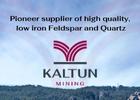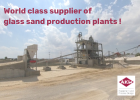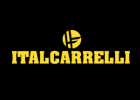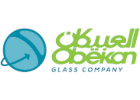INFO
Dies sind die Basisdaten für das ausgewählte Unternehmen. Diese Firma stellt weitere Informationen wie z.B. Webseite, Telefon- und Fax-Nummern, Ansprechpartner, Firmengeschichte, Details bereit.
Um diese Informationen einzusehen benötigen Sie einen gültigen "Profile Access" für glassglobal.com. Die Konditionen können Sie über folgenden Link: Preis Info einsehen
Kontakt Info
| Anschrift | Moncada Solar Equipment C/da Chiartasi snc 93010 Campofranco |
| Land | Italien |
| Ihre Nachricht an Moncada Solar Equipment |
Produkte oder Maschinen
With its own manufacturing plant strategically placed in Italy we are able to produce the latest photovoltaic modules with Thin Film amorphous technology with an annual capacity equal to 100MW.
The production line of photovoltaic modules in Sicily went into full production in the first half of 2010. The manufacturing plant is situated in Campfranco, Caltanissetta, close to the industrial area of Casteltermini, and will produce an electric capacity of around 40 MW per year. This plant employs approximately 110 people.
The manufacturing process of our photovoltaic panels is highly automated. The computerized system manages the transition of each panel from one machine to the next. The line operators and process engineers are fundamental to ensure uninterrupted production.
The value added by the production technicians, engineers and people responsible for the production line is to be able to better understand the operation of the machines and suggest improvements to optimize the cost of production of the panel itself.
All machines in the production line are connected so their performance and state of “health” can be verified remotely.
The notable size and complexity of the machines necessitates specialized teams of engineers and technicians that can confront every type of problem that could occur during their use.
Due to the fact that some of the necessary raw materials aren’t readily available, it is necessary to employ a dedicated procurement team responsible for the purchasing and storage of raw materials to avoid costly interruptions in production. The manufacturing plant is able to function thanks to all of the support facilities.
The plant also produces electrical energy for machines and produces a special kind of water (mineral free) that is utilized inside of complex machines so as to not damage them with salts and various minerals.
The production panel generates an electrical potential of around 400W. This is tested at the end of line by a solar light stimulator and is cataloged in terms of Watts produced inside of a predetermined interval.
The panel can then be installed with ease thanks to the spars that are placed on the backside of the panel itself and can be easily screwed on to the supports.
To collect the maximum quantity of sunlight the panels are installed based on our experience; the study of the latitude and variations in the positioning of the sun over the course of the year. The panels are angled facing south, taking into account the land, the characteristic of the panel, the latitude of the solar farm.






















